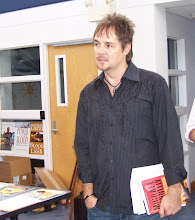
Increasingly, we’re living in a world where nobody listens.
There’s so much noise, such a continuous assault on our senses, that we have to create filters just to survive, but sometimes we filter out too much. Sometimes, we’re not really listening to the important things being said and not being said to us.
It’s as if we have an inverse form of ADHD—instead of letting everything in equally, we’ve stopped letting in much of anything at all. Of course, this is due in part to the rampant narcissism and self-involvement of our time, but I really do believe the deafening levels of noise, the sheer volume of stimuli have overwhelmed us to the point of living defensively—like little monkeys with our hands over our eyes and ears and minds.
Not so in the era of AMC’s “Mad Men,” when television was still novel (on only for a few hours a day), people read, and the assault known as advertising and entertainment wasn’t nearly so ubiquitous.
There is much to recommend about “Mad Men”—the characters, the sets, the sleek sexiness, but perhaps what is best about it is not what’s in it, but what’s left out.
The makers of “Mad Men” have mastered the art of silences.
Like the white space on a page of text, and the way it shapes the reading experience, the well-placed silences in “Mad Men” are exquisite and excruciating.
And it’s not just the silences, but the overall quietness of the sophisticated drama. There’s very little music, very little noise, just people talking—and not—so much so that commercial breaks are even more jarring in their intrusion than usual.
Set in 1960s New York, the sexy, stylized drama follows the lives of the men and women of Madison Avenue advertising. The series revolves around the conflicted Don Draper, the biggest ad man (and ladies’ man) in the business, and his colleagues at the Sterling Cooper Advertising Agency. As Don makes the plays in the boardroom and the bedroom, he struggles to stay a step ahead of the rapidly changing times and the young executives nipping at his heels. The series also depicts authentically the roles of men and women in this era while exploring the true human nature beneath the guise of 1960s traditional family values.
“Mad Men” is one of the most existential dramas to ever air on TV. All the characters are vaguely aware something is missing, something isn’t right, but for Don the feeling is anxiety-causing acute. We are given a front row seat to the lives of men and women trudging around the abyss, the quietness of their lives, the many silences around them, an outward manifestation of the noiseless void inside of them.
Relish the quiet and silence of “Mad Men,” get caught up in the spectacular set pieces and the turbulent times, and, most of all, the complex characters. As you do, remember, if it appears nothing is happening, look again. It’s all there—only it’s in the subtext. If you only hear the text you’ll miss it. If you only see what’s on the surface, you won’t perceive most of what’s happening—the bulk of the berg moving these people is below the surface. Way below—where the current actually runs in a different direction.
If you haven’t tried “Mad Men” or tried it and weren’t immediately smitten, try it again. Still yourself from the frenzy of Twenty-first Century America’s frantic pace, shut out the din and noise and sound and fury that is modern, manic, shallow culture, and embrace the essential silence at the heart of “Mad Men.” Listen. It is the center of Job’s whirlwind, and out of its utter emptiness, truly transformational truths can be heard—but only if we are still and quiet and linger to listen.












1 comment:
I'm an addict. I think it's the best written show on television, and a great show for writers to watch. As you say, I am learning more about subtext and silence.
Post a Comment